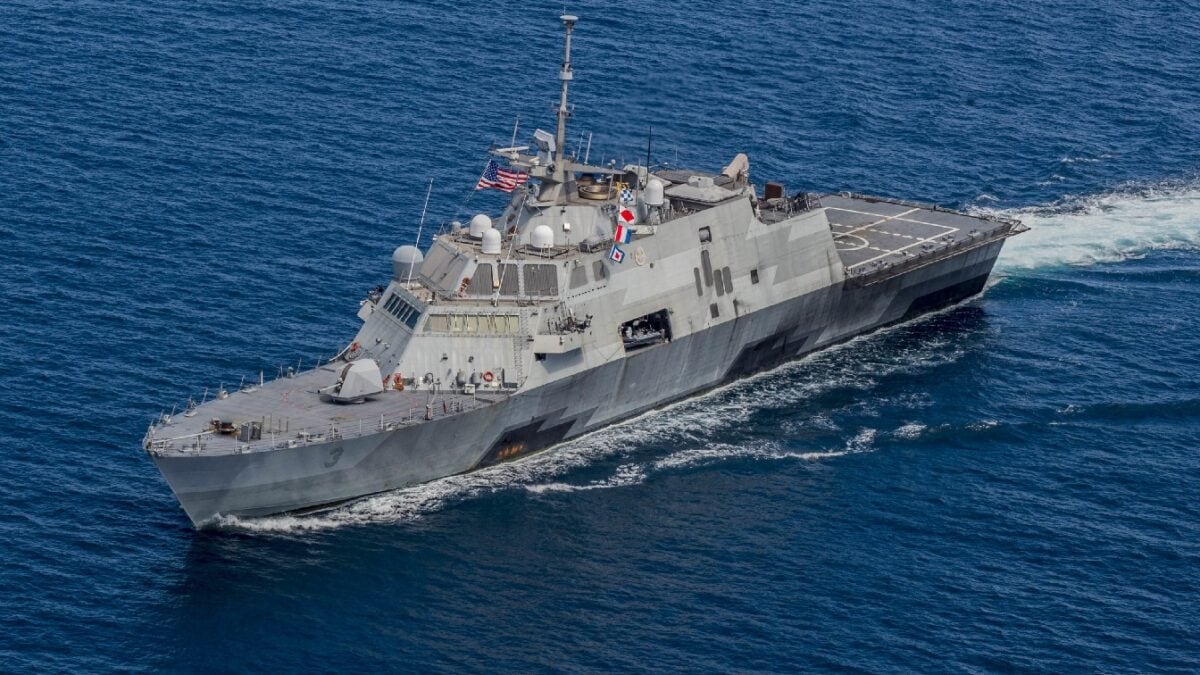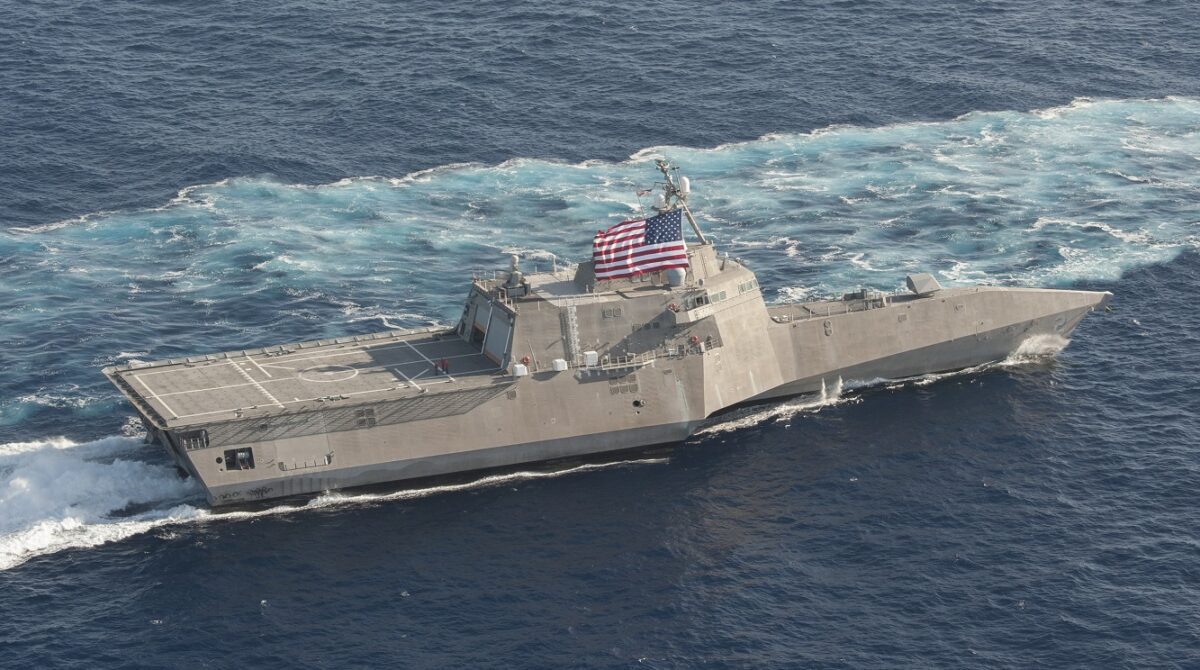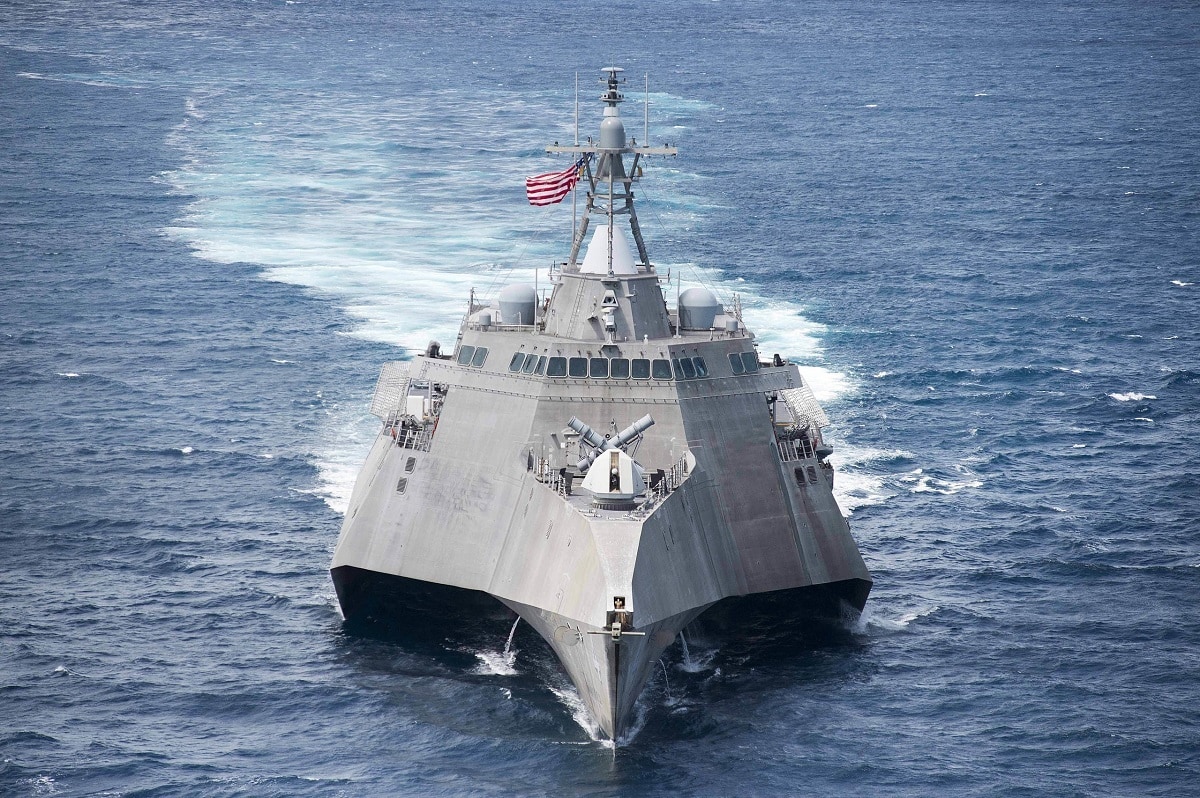It’s a U.S. Naval vessel that many have opinions on and not all of these points of view are positive. The Littoral Combat Ship has spawned controversy, but one U.S. Navy admiral wants the warships deployed in the Western Pacific to include the East and the South China Sea – an area that is often patrolled by China. If the commander of the Naval Surface Forces has his way, there will be six Independence-class Littoral Combat Ships operating in those waters at any given time in the coming years.
Let’s Keep Littoral Combat Ships in Business
“In the Indy class, we continue to deploy them to the Western Pacific – trying to keep that 3.0 presence out there and build it to probably around six here in a few years,” Vice Admiral Roy Kitchener, the commander of Naval Surface Forces, told USNI News.
Naval Strike Missile Is a Redeeming Feature
Since the Independence-class is equipped with the Naval Strike Missile, Kitchener believes the Littoral Class Ships will be relevant. The USS Mobile, an Independence-class Littoral Combat Ship, had the Naval Strike Missile installed in April. The Naval Strike Missile is intended to destroy enemy ships and in support of marines and soldiers fighting in amphibious operations. It has a 500-pound warhead with a programmable fuse and a range of over 100 nautical miles.
But the Ships Are Showing Cracks
The Independence-class has suffered from various design flaws over the years. There are 13 Indy-class Littoral Combat Ships in service. The Navy confirmed in May that the USS Omaha has structural damage. At least six of the Independence-class vessels have similar faults including cracks in their hulls. The Navy believes that no sailor’s safety is threatened by the issues. The problems were first identified in the USS Coronado in 2019. The Navy plans to decommission the Coronado.
The cracks are happening in the “higher-stress areas of the [ship’s] structure.” The Navy Times also said that “cracks can grow if the ships transit faster than 15 knots in seas with maximum wave heights of about eight feet.”
This Could Become a Mess
The ships’ deck plate and shell plate will be restored with thicker material. This won’t be an easy procedure and will likely affect ships’ performance, according to retired naval officer Bradley Martin, who is now a senior researcher at the RAND Corporation.
“Taking out the deck plate and shell plate can’t be done outside a big availability and, if nothing else, it will add to the ship’s weight, which will likely slow it down. This really looks like a huge, bad deal for this ship class,” Martin said in the Navy Times.
Take Them Out of Service
In addition to the Coronado, the Navy has also retired the first ship of the class – the USS Independence. Chief of Naval Operations Admiral Michael Gilday thinks that retiring the Littoral Combat Ship can create savings that can be diverted to other ships that can answer the call against China. This idea is called “divest to invest.” Gilday believes the retired littoral ships had maintenance problems and aging radar and weapons systems. The Littoral Combat Ship also has dealt with issues with its combining gears in the engineering plant.

(Aug. 19, 2015) The littoral combat ship USS Fort Worth (LCS 3) assembles in formation with ships from the Royal Malaysian Navy as part of Cooperation Afloat Readiness and Training (CARAT) Malaysia 2015. CARAT is an annual, bilateral exercise series with the U.S. Navy, U.S. Marine Corps and the armed forces of nine partner nations. (U.S. Navy photo by Mass Communication Specialist 2nd Class Joe Bishop/Released)
What’s Next?
It is a curious state of affairs when the Chief of Naval Operations wants to decommission Littoral Combat Ships while the Vice Admiral in charge of the Navy’s surface fleet is planning to use them in the Indo-Pacific over the next few years.
Lack of Consensus
Congress will be the ultimate arbiter about the ships’ future, but lawmakers do not agree on the path forward for the Littoral Combat Ship. In the run-up to passing the National Defense Authorization Act this year, three separate House subcommittees of the larger Armed Services Committee blocked the Navy from removing five Littoral Combat Ships from duty. But some Democrats on the committee want the ship to be retired. Congresswoman Jackie Speier of California gave a presentation with a chart titled “Leaking Cracked Ships” that included a picture of each Littoral Combat Ship with a lemon to signify a lack of quality in shipbuilding.

The littoral combat ship USS Independence (LCS 2) is underway in the Pacific Ocean. (U.S. Navy photo by Chief Mass Communication Specialist Keith DeVinney/Released)
The Navy and the legislative branch are giving mixed signals regarding the future of the Littoral Combat Ship. It is not clear what comes next for the vessels. On one hand, the more warships the Navy has the better. On the other hand, defective ships that could save money with their retirement would be a good way to funnel the savings back into other programs. This debate will continue in Washington unless there is more guidance on Naval strategy from the White House. The president’s National Security Strategy that is due this month will finally be revealed after much delay – hopefully adding clarity to a murky situation.
Expert Biography: Serving as 1945’s Defense and National Security Editor, Dr. Brent M. Eastwood is the author of Humans, Machines, and Data: Future Trends in Warfare. He is an Emerging Threats expert and former U.S. Army Infantry officer. You can follow him on Twitter @BMEastwood. He holds a Ph.D. in Political Science and Foreign Policy/ International Relations.

